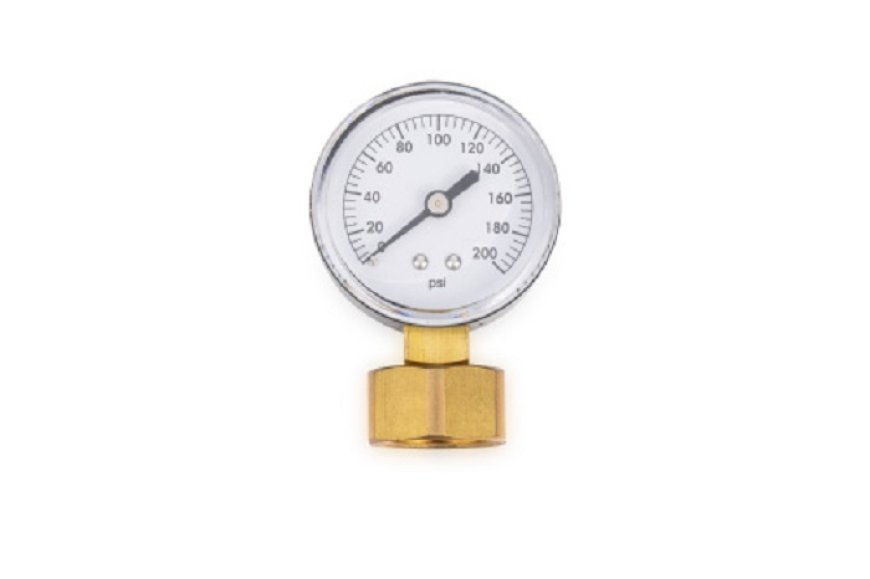Is the Vacuum Pressure Gauge Always the Negative Gauge Pressure?
In mechanical systems, pressure measurement is essential. Engineers rely on accurate readings to ensure safe and efficient operations. One specific tool used for this task is the vacuum pressure gauge

In mechanical systems, pressure measurement is essential. Engineers rely on accurate readings to ensure safe and efficient operations. One specific tool used for this task is thevacuum pressure gauge?. It plays an important role in systems where pressure drops below atmospheric levels. These systems are common in industrial processes, HVAC systems, laboratories, and manufacturing lines.
The term vacuum can often confuse new technicians or students. It is important to understand that a vacuum is not a substance. Instead, it is the absence or reduction of pressure compared to the surrounding atmosphere. Many people also ask a common question: is the vacuum pressure gauge always showing a negative gauge pressure?
This article explores the answer in detail. It begins with a basic explanation of pressure types. It then explains how a vacuum pressure gauge works. The article also shows when and why the reading becomes negative, and when it may not. By the end, readers will understand the full story behind vacuum pressure readings.
Types of Pressure: Absolute, Atmospheric, and Gauge
Before discussing vacuum readings, we must understand the different ways pressure is measured. There are three main types: absolute pressure, atmospheric pressure, and gauge pressure.
Absolute pressure is measured relative to a perfect vacuum. It starts at zero and increases as pressure rises. It is often used in scientific and engineering calculations where precision is needed.
Atmospheric pressure is the air pressure around us. At sea level, this is approximately 101.3 kPa or 14.7 psi. It changes with altitude and weather.
Gauge pressure is the pressure measured relative to atmospheric pressure. Most pressure gauges, including vacuum pressure gauges, show gauge pressure. This means that a gauge reading of zero does not mean no pressure at all. It simply means the pressure is equal to atmospheric pressure.
What Is a Vacuum Pressure Gauge?
A vacuum pressure gauge is an instrument that measures pressures below atmospheric pressure. It is used when a system operates under a partial vacuum or full vacuum. These systems remove air or gases to perform specific tasks, such as packaging, chemical reactions, or component testing.
The vacuum pressure gauge typically uses a mechanical sensing element. The most common types include Bourdon tubes, diaphragm elements, or capsules. When the pressure inside the system drops below atmospheric pressure, the sensor deforms. This movement is transferred to the needle, which points to a value on the dial.
Vacuum pressure gauges are often labeled with a negative scale. For example, the dial might range from 0 to -30 inches of mercury (inHg), or from 0 to -1 bar. These negative values represent pressure levels below atmospheric.
Why the Reading Is Often Negative
The most direct answer to the question is yes: a vacuum pressure gauge often shows negative gauge pressure. That is because gauge pressure uses atmospheric pressure as a reference point. When a system has less pressure than the atmosphere, the difference becomes negative.
For example, if atmospheric pressure is 14.7 psi and the system is at 10 psi absolute, the gauge will read -4.7 psi. This is because the pressure is 4.7 psi below the atmosphere.
This negative value helps users understand how much vacuum has been created in the system. The deeper the vacuum, the closer the reading gets to the full negative end of the scale.
When the Gauge May Not Be Negative
While most vacuum pressure gauges show negative values, not all use a negative scale. Some gauges use absolute pressure instead of gauge pressure. These are called absolute pressure gauges. In those instruments, zero means a perfect vacuum. As the pressure increases, the reading becomes positive. This type of gauge does not show a negative reading, even though it is measuring vacuum.
There are also compound gauges. These instruments measure both vacuum and positive pressure. The dial includes a negative section for vacuum and a positive section for pressure. In such gauges, the needle may swing from negative to positive depending on system behavior.
Some digital vacuum sensors or transmitters may display the vacuum level in microns, millibar, or Torr. These units are also absolute, so the readings are not negative. This shows that the negative sign is not a strict rule. It depends on the reference point and the type of gauge used.
The Role of Calibration and Scale
The vacuum pressure gauge must be correctly calibrated to provide reliable readings. If the gauge is designed for gauge pressure, then its zero point is set at atmospheric pressure. It must then show negative values as pressure drops.
If it is calibrated for absolute pressure, then zero is set at full vacuum. In this case, the gauge shows only positive values, starting from zero and increasing as pressure rises.
It is important to read the label and understand the scale of the vacuum pressure gauge. Misinterpreting the scale can lead to errors in operation, safety, or process control.
Applications That Require Negative Gauge Pressure
Many systems require vacuum conditions to operate correctly. For instance, vacuum pumps are used in air conditioning systems to remove moisture and air. In such systems, technicians often use vacuum pressure gauges with negative scales.
Other uses include vacuum packaging in the food industry, laboratory suction devices, and vacuum drying chambers. In these situations, the user needs to monitor how far below atmospheric pressure the system has reached.
In automotive engines, a vacuum pressure gauge can help diagnose intake problems. It measures the vacuum created inside the intake manifold when the engine runs. A normal engine shows a steady negative gauge pressure when idling.
How Diaphragm Gauges Measure Vacuum
Among the types of vacuum pressure gauges, the diaphragm pressure gauge is useful for low-pressure vacuum systems. It uses a thin, flexible diaphragm that deforms under pressure differences. This motion moves a pointer on the dial.
The diaphragm pressure gauge is sensitive to small changes in pressure. It is often used in clean applications such as medical vacuum systems, laboratory conditions, and sensitive industrial controls.
Because of its design, the diaphragm pressure gauge can measure both vacuum and low positive pressures. Some designs even allow switching between absolute and gauge measurement modes. However, when set for gauge pressure, it will show negative readings under vacuum conditions.
Conclusion: Negative Gauge Pressure Is Common But Not Universal
So, is the vacuum pressure gauge always the negative gauge pressure? In most practical cases, yes. When a vacuum gauge measures pressure relative to the atmosphere, the reading is negative. This helps users understand how much vacuum has been achieved in a system.
However, not all vacuum measurements are made using gauge pressure. Some systems use absolute pressure. In those cases, the readings are not negative, even though the system is under vacuum. The value is positive, starting from zero at full vacuum and rising with pressure.
Understanding the reference point is key. Whether the vacuum pressure gauge shows negative or positive values depends on its calibration and intended use. Engineers and technicians must read the label, understand the scale, and use the right type of gauge for the job.
Vacuum systems are complex and require precision. Choosing the correct gauge typewhether gauge, absolute, or diaphragm pressure gaugeensures reliable results and safe operation.























